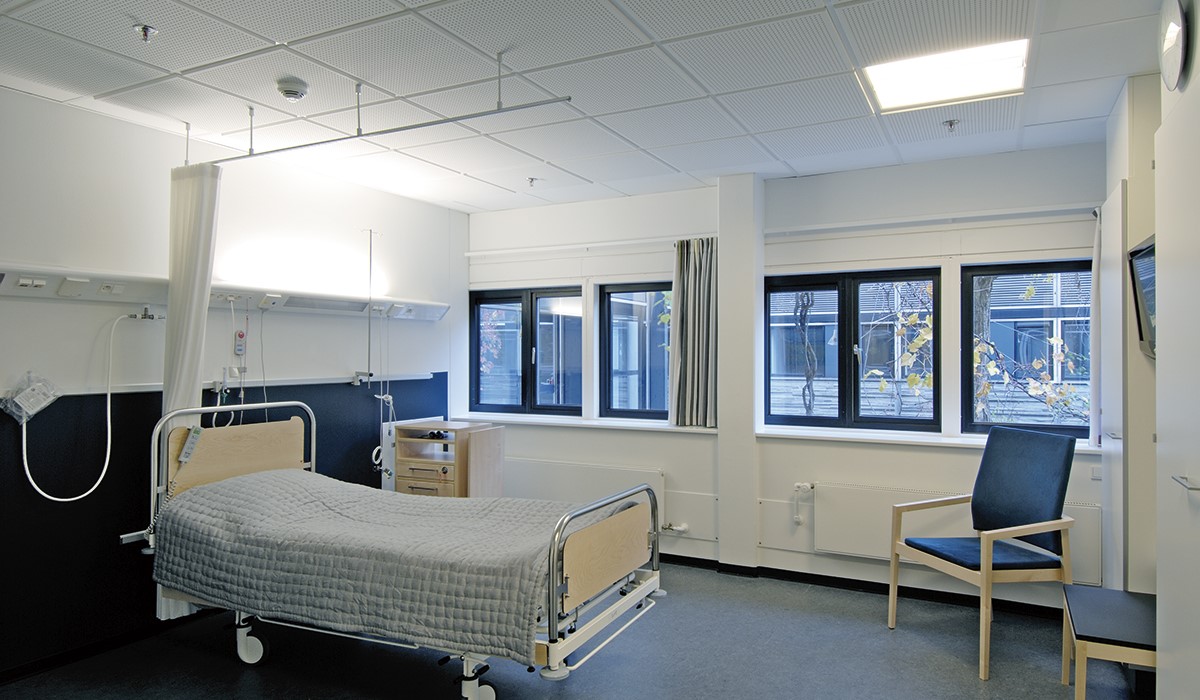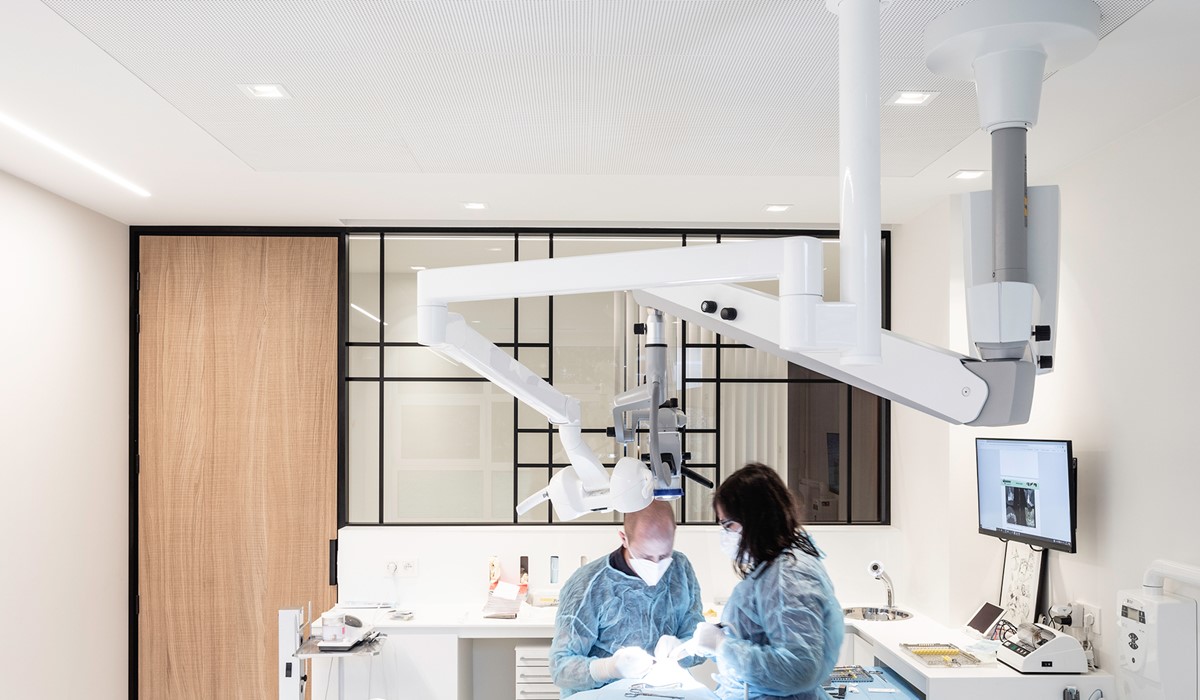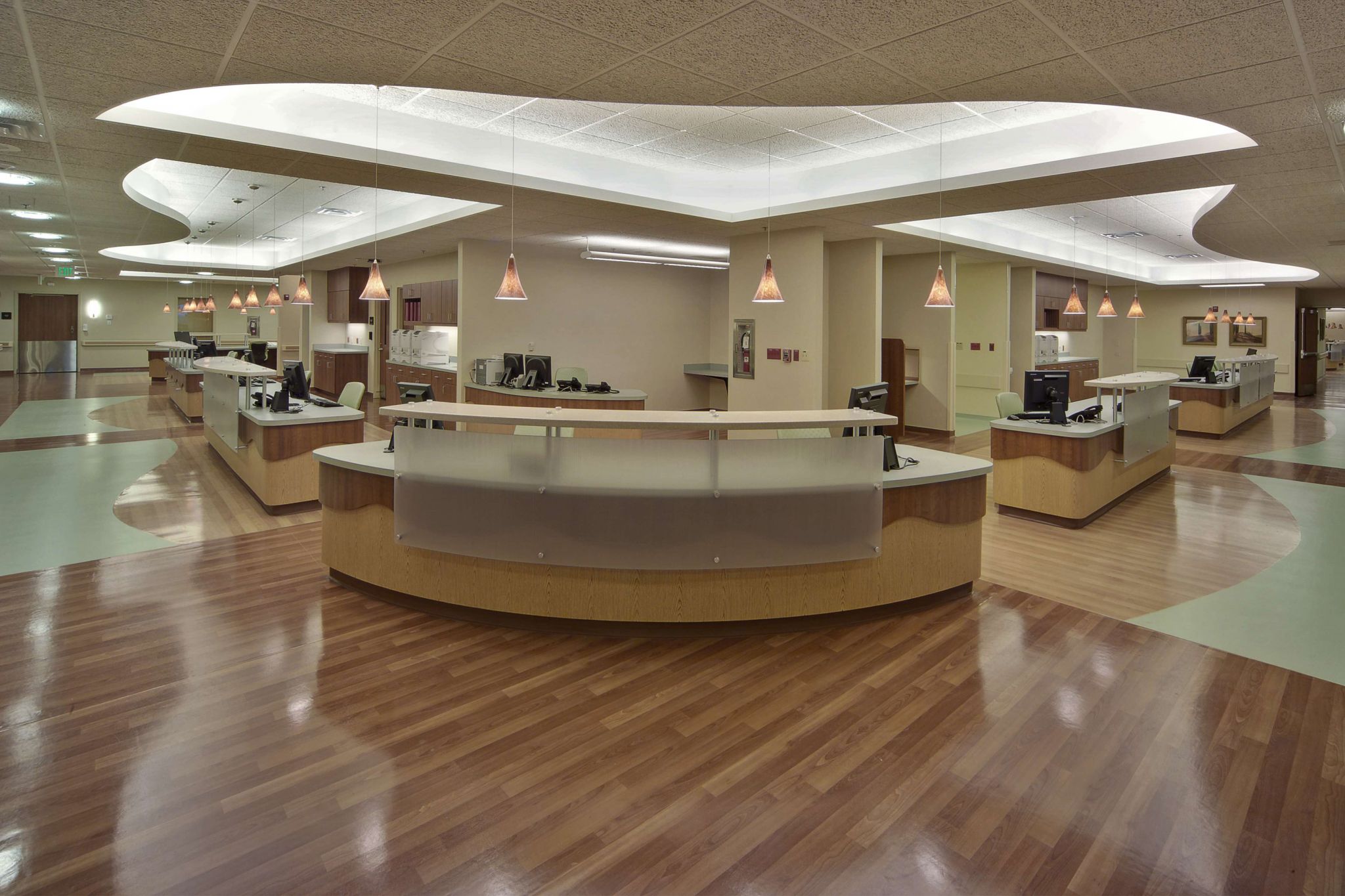Acoustical Ceiling Comforts Patients - Enhancing Healing Environments With Sound Control
Acoustics play a vital role in creating healing environments within healthcare facilities. Hospitals and medical centers can be bustling and noisy places, filled with the sounds of medical equipment, footsteps, and conversations. Acoustical ceiling comforts patients especially those who are recovering or undergoing treatments as a quiet and peaceful atmosphere is essential for rest, recovery, and overall well-being.
Author:George EvansAug 16, 20237.7K Shares209.8K Views

Acoustics play a vital role in creating healing environments within healthcare facilities. Hospitals and medical centers can be bustling and noisy places, filled with the sounds of medical equipment, footsteps, and conversations.
Acoustical ceiling comforts patientsespecially those who are recovering or undergoing treatments as a quiet and peaceful atmosphere is essential for rest, recovery, and overall well-being.
When you visit a hospital, whether as a patient or a visitor, your surroundings should not only make you feel safe and comfortable, but they should also aid in the healing process. Indeed, it has been demonstrated that the physical environment and comfort of healthcare facilities have a direct impact on patient health and recovery times.
An acoustical ceiling comforts patients by controlling noise levels and creating a soothing environment that aids in the healing process.
Acoustic conditions that are ideal are critical to the quality and excellence of healthcare facilities. External noise contributes to dangerously elevated blood pressure, pulse and respiration rates, as well as cognitive impairment and sleep disruption.
Patients require calm areas to heal. For staff, intellectual activity and therapeutic procedures necessitate focus, and noisy environments can have a direct impact on the quality of diagnosis and treatment. The hospital environment is in a catch-22 scenario because it requires acoustic comfort while also having components and technology that generate a lot of noise.
Noise Pollution And Its Effects On Patients
Noise pollution in healthcare settings can lead to a multitude of adverse consequences for patients, staff, and visitors. It disrupts the healing process and hampers the overall patient experience in the following ways:
Increased Stress And Anxiety
Excessive noise can lead to elevated stress and anxiety levels among patients, making it difficult for them to relax and concentrate on their recovery. Studies have shown that prolonged exposure to noise in hospitals can contribute to heightened cortisol levels, a stress hormone that can negatively impact the healing process.
Sleep Disturbances
Sleep is a vital aspect of the healing process, but noise pollution in hospitals can severely disrupt patients' sleep patterns. Constant noise can cause frequent awakenings, fragmented sleep, and difficulty falling asleep, which in turn delays the healing process and prolongs recovery times.
Impaired Communication
High noise levels can hinder effective communication between patients and healthcare providers. Patients may struggle to hear important information about their medical condition, treatment plans, and care instructions, potentially leading to misunderstandings and medical errors.
Aggravation Of Medical Conditions
For patients with certain medical conditions or undergoing specific treatments, noise can exacerbate symptoms and hinder the effectiveness of therapies. This is particularly evident in areas such as intensive care units (ICUs) and neonatal intensive care units (NICUs), where vulnerable patients require a quiet and serene environment to aid their recovery.
Reduced Patient Satisfaction
Noise pollution can negatively impact patient satisfaction and the overall perception of healthcare facilities. Patients who experience discomfort due to excessive noise are less likely to rate their healthcare experience positively, which can affect the reputation of the healthcare institution.
Addressing Noise Pollution With Acoustical Ceilings
As healthcare facilities strive to provide patient-centered care and create healing environments, mitigating noise pollution has become a top priority. Acoustical ceilings have emerged as an effective solution to address noise-related challenges in healthcare settings. These specially engineered ceilings are designed to control sound transmission, absorb excess noise, and create a quieter and more peaceful environment for patients.
How Do Acoustical Ceilings Improve Patient Comfort?
Acoustical ceilings play a pivotal role in improving patient comfort in healthcare settings. These specially engineered ceilings are designed to control sound transmission, absorb excess noise, and create a quieter and more peaceful environment for patients.
With their noise-reduction capabilities, acoustical ceilings significantly contribute to enhancing patient comfort, rest, and overall well-being during their stay in hospitals or medical facilities.
Noise Reduction
One of the primary ways acoustical ceilings improve patient comfort is by reducing noise levels in healthcare spaces. Hospitals can be busy and noisy environments, with constant activities, medical equipment, and conversations contributing to elevated sound levels.
Excessive noise can be stressful for patients, making it difficult for them to rest, sleep, and recuperate. Acoustical ceilings effectively absorb sound reflections and dampen vibrations, resulting in a quieter atmosphere that promotes relaxation and calmness.
Patients can experience a more serene environment, which positively impacts their emotional well-being and contributes to a sense of comfort and security.
Enhanced Sleep Quality
Restful sleep is a crucial aspect of the healing process. However, the constant noise in hospitals can disrupt patients' sleep patterns and impair the quality of their rest. Acoustical ceilings aid in minimizing noise disruptions, creating an environment conducive to better sleep quality.
By absorbing ambient noise and reducing sound transmission, these ceilings promote uninterrupted sleep, which is essential for the body's natural healing mechanisms. Improved sleep quality supports faster recovery, reduces stress, and enhances the overall patient experience.
Effective Communication
Clear and effective communication between patients and healthcare providers is vital for accurate diagnosis, treatment planning, and patient-centered care. Excessive noise levels can hinder communication, leading to misunderstandings and medical errors.
Acoustical ceilings play a role in speech privacy, ensuring that patient conversations with healthcare providers remain confidential. By minimizing background noise, these ceilings facilitate more effective patient-provider interactions, fostering a supportive and compassionate healthcare environment.
Stress Reduction
The healing process can be stressful for patients and their families. High levels of stress and anxiety can negatively impact recovery and the overall patient experience. Acoustical ceilings contribute to stress reduction by providing a quieter and calmer environment.
As noise disruptions decrease, patients can experience reduced stress levels, promoting a sense of relaxation and well-being. A calming atmosphere can enhance patients' ability to cope with their medical conditions and treatments, resulting in a more positive healing experience.
Supporting Patient Privacy And Dignity
Privacy is essential for patient comfort and dignity in healthcare settings. Acoustical ceilings help maintain speech privacy, ensuring that private conversations between patients and healthcare providers remain confidential.
Patients can feel more at ease and assured that their personal information and medical discussions are protected. Maintaining patient privacy is integral to fostering trust and respect in the patient-provider relationship, contributing to a positive healing environment.
Seamless Integration With Aesthetics
Beyond their functional benefits, acoustical ceilings seamlessly integrate with the overall interior aesthetics of healthcare spaces. These ceilings offer a wide range of design options and finishes, allowing healthcare facilities to customize the appearance to match their interior decor. The combination of acoustical comfort and visual appeal ensures that patients experience a comfortable and aesthetically pleasing environment during their stay.
Innovative Sound Control Solutions For Hospitals
In healthcare settings, patient comfort is of paramount importance for fostering a positive healing environment. While acoustical ceilings play a significant role in reducing noise pollution and improving patient comfort, the integration of additional innovative acoustical solutions further enhances the overall auditory experience within healthcare facilities.
These solutions work in tandem with acoustical ceilings to create a comprehensive approach to sound control, ensuring a serene and calming atmosphere for patients. Let's explore the various innovative acoustical solutions that complement acoustical ceilings and contribute to enhancing patient comfort:
Sound-Absorbing Wall Panels
Sound-absorbing wall panels are an effective solution for controlling sound reflections and echoes within patient rooms, waiting areas, corridors, and common spaces. These panels feature acoustically engineered materials designed to absorb sound waves, reducing sound reverberation and minimizing overall noise levels.
Sound-absorbing wall panels work synergistically with acoustical ceilings to create a well-balanced acoustic environment, providing patients with a quieter and more restful atmosphere.
Acoustic Furniture And Fixtures
Incorporating acoustic furniture and fixtures in healthcare spaces further contributes to sound control and patient comfort. These specially designed pieces of furniture and fixtures feature sound-absorbing materials or design elements that reduce noise reflections and vibrations.
From acoustic partitions and room dividers to furniture with built-in sound-absorbing properties, these solutions help create designated quiet zones and private areas, enhancing patient privacy and promoting a sense of tranquility.
White Noise And Sound Masking Systems
White noise and sound masking systems are employed in healthcare settings to create a background of consistent and low-level noise that masks ambient sounds. By introducing controlled sound to mask distractions and unwanted noise, these systems help create a more soothing auditory environment.
White noise and sound masking systems are particularly beneficial in areas where maintaining speech privacy is crucial, such as patient rooms, consultation areas, and administrative spaces.
Acoustic Room Design
Strategic room design is an essential aspect of achieving optimal sound control within healthcare facilities. Careful consideration of the layout, placement of furniture, and the use of sound-absorbing materials contribute to reducing noise reflections and maintaining a comfortable acoustic environment.
Architects and interior designers collaborate to create spaces that prioritize patient comfort, well-being, and the effective delivery of healthcare services.
Use Of Soundproofing Materials
In certain medical areas, such as operating rooms, critical care units, and imaging suites, precision in sound control is crucial. Soundproofing materials are integrated into the design of these specialized spaces to isolate them from external noise sources and ensure minimal sound transmission. Soundproofing techniques create environments conducive to focused medical procedures and support the well-being of both patients and medical staff.
People Also Ask
What Is An Acoustical Ceiling, And How Does It Improve Patient Comfort In Healthcare Settings?
An acoustical ceiling is a specially engineered ceiling system designed to control sound transmission and absorb excess noise in interior spaces. In healthcare settings, acoustical ceilings contribute to patient comfort by reducing noise levels, creating a quieter environment that enhances rest, sleep, and overall well-being.
How Do Acoustical Ceilings Promote Healing And Recovery For Patients In Hospitals?
Acoustical ceilings promote healing and recovery in hospitals by minimizing noise disruptions, reducing stress and anxiety for patients, and improving sleep quality. The quieter environment created by acoustical ceilings supports better patient rest and concentration during therapies, ultimately contributing to faster healing outcomes.
What Are The Benefits Of Integrating Acoustical Solutions In Healthcare Facilities Beyond Acoustical Ceilings?
Beyond acoustical ceilings, integrating other acoustical solutions such as sound-absorbing wall panels, acoustic furniture, sound masking systems, and strategic room design further enhances patient comfort and well-being. These solutions collectively contribute to a more soothing and calming environment in healthcare settings.
How Does Noise Reduction Through Acoustical Ceilings Improve Communication Between Patients And Healthcare Providers?
Acoustical ceilings aid in speech privacy, ensuring that sensitive conversations between patients and healthcare providers remain confidential. By reducing background noise, acoustical ceilings create a more conducive environment for effective communication, leading to accurate diagnosis and patient-centered care.
In Which Areas Of A Healthcare Facility Are Acoustical Ceilings Particularly Beneficial?
Acoustical ceilings are particularly beneficial in critical care areas, such as intensive care units (ICUs) and neonatal intensive care units (NICUs), where noise reduction is crucial for the well-being of vulnerable patients. Additionally, acoustical ceilings enhance patient comfort in patient rooms, waiting areas, and therapeutic spaces, contributing to a more positive healthcare experience overall.
Conclusion
Acoustical ceilings and innovative sound control solutions play a crucial role in creating healing environments that prioritize patient comfort and well-being. By reducing noise levels, enhancing speech privacy, and promoting a peaceful atmosphere, acoustical ceiling comforts patients.
Healthcare facilities that prioritize acoustical comfort demonstrate their commitment to providing patient-centered care and fostering a healing environment that supports the recovery and well-being of patients, staff, and visitors alike.

George Evans
Author
George Anderson, an exceptional architectural designer, envisions and brings to life structures that transcend the realm of imagination. With an unwavering passion for design and an innate eye for detail, George seamlessly blends form and function, creating immersive spaces that inspire awe.
Driven by a deep appreciation for the interplay of space, light, and materials, George's innovative approach redefines the possibilities of architectural design. His visionary compositions leave an indelible mark, evoking a sense of wonder and transforming the built environment.
George Anderson's transformative designs and unwavering dedication continue to shape the architectural landscape, pushing the boundaries of what is possible and inspiring generations to come.
Latest Articles
Popular Articles

